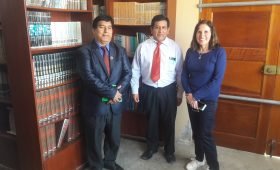The year in 999 marks a significant period in the tapestry of European history, particularly in the evolution of education. As the continent was transitioning from the shadows of antiquity into the dawn of a new millennium, various educational systems began to take shape. During this time, the church played a central role in how knowledge was disseminated, and monasteries became the epicenters of learning. This article will explore the intricate layers that defined education in medieval Europe during this pivotal year, focusing on its institutions, curriculum, and the societal implications that emerged from this developmental phase.
The Role of the Church in Education
The medieval period in Europe saw the church establishing itself as the primary source of education. By 999, the influence of Christianity had permeated every aspect of life, including intellectual pursuits.
Monastic Schools
Monastic schools were among the earliest forms of organized education during the medieval period. These schools often operated within monasteries, where monks took on the responsibility of educating young boys.
Monks taught reading, writing, and the basic tenets of Christian doctrine, which included Latin—the language of the Church. Monastic schools not only focused on religious instruction; they also served as repositories of classical knowledge. Many monks were well-versed in ancient texts and worked diligently to preserve and transcribe them, ensuring that the philosophical and scientific ideas of antiquity would not be lost.
The curriculum at these monastic schools was largely influenced by the Rule of St. Benedict, which emphasized a balance between prayer and work. Although accessible primarily to the sons of nobility or affluent families, these schools laid the groundwork for future educational institutions and sparked a cultural revival in Europe.
Cathedral Schools
As cities grew and the population increased, cathedral schools emerged alongside monastic institutions. While they retained a strong religious foundation, these schools provided a more expansive curriculum.
Cathedral schools offered instruction in grammar, rhetoric, logic, arithmetic, geometry, music, and astronomy—subjects that collectively formed the Trivium and Quadrivium. These subjects were designed to mold students into well-rounded individuals capable of contributing to both church and society.
These institutions attracted a diverse group of students, including clergy and laypeople, and many graduates would go on to fill important roles in the administration of the church as well as secular positions in emerging towns and courts. The rise of cathedral schools marked a shift towards a more urban-centric approach to education, reflecting the changing dynamics of medieval society.
Influence of Islamic Scholarship
During this era, the exchange of knowledge was not confined to Europe alone. The Islamic Golden Age had produced vast amounts of scholarship in various fields, including mathematics, medicine, and philosophy.
As monasteries and cathedral schools began to recognize the value of this knowledge, the translation movement gained momentum. Scholars in Europe started translating Arabic texts into Latin, allowing for the introduction of new ideas and methodologies. This intellectual cross-pollination enriched the curriculum in medieval educational institutions, providing fresh insights and techniques that would later underpin the Renaissance.
See more: in999
Curriculum and Teaching Methods
The landscape of education in medieval Europe was characterized by a unique blend of religious and secular teachings. By 999, the curriculum was beginning to diversify, influenced by both tradition and the changing needs of society.

The Trivium and Quadrivium
Central to the educational framework of this period were the concepts of the Trivium and Quadrivium. The Trivium consisted of grammar, rhetoric, and logic, forming the foundational skills necessary for effective communication and critical thinking.
Students first mastered grammar, learning to read and write Latin fluently. They then progressed to rhetoric, where persuasive speaking and writing were emphasized. Finally, logic equipped students with the tools needed for analytical thinking, an essential skill in theological debate and scholarly discourse.
The Quadrivium built upon these foundational skills and included arithmetic, geometry, music, and astronomy. Together, these two frameworks created a comprehensive educational model that enabled students to understand both the humanities and the sciences.
Pedagogical Approaches
Teaching methods in medieval Europe were often informal and heavily reliant on oral instruction. The Socratic method, a form of dialogue-based learning, was a prevalent technique employed by educators of the time.
Teachers engaged students through questions and discussions, encouraging active participation and critical thinking. This interactive form of learning allowed students to develop their reasoning skills and engage deeply with the material. However, this approach could vary greatly depending on the institution and the individual teacher’s style.
Due to the limited availability of written texts, much of the learning was conducted through memorization. Students often recited passages aloud and engaged in repetitive exercises to internalize knowledge. This reliance on orality and memorization reinforced the oral traditions that were vital in transmitting knowledge throughout the medieval period.
The Concept of Literacy
Literacy in 999 was predominantly restricted to a select few. While the clergy and educated elites were expected to be literate, most peasants remained largely illiterate.
The ability to read and write granted access to religious texts, legal documents, and administrative records, thus creating a clear divide between the educated and uneducated classes. Despite this, mnemonic devices and oral traditions played a critical role in preserving history, folklore, and practical knowledge within communities that lacked formal education.
Furthermore, the rise of universities in subsequent centuries would begin to challenge the exclusivity of education by expanding literacy and knowledge across broader demographics. However, at this point in time, education remained a privilege reserved primarily for the elite.
Educational Institutions and Their Evolution
As Europe moved towards the end of the first millennium, the foundations of educational institutions were being laid. Various factors contributed to the emergence of schools as more structured entities, catering to an ever-growing populace.
The Birth of Universities
By the year 999, the concept of universities as we know them today was still nascent. However, the elements that would eventually lead to the formation of universities were beginning to coalesce.
The first universities began to appear in the 12th century, but the groundwork for such institutions was being established through the increasing demand for educated individuals. Church leaders recognized the need for trained clergy, while emerging towns required knowledgeable administrators. This demand led to the growth of schools beyond monasteries and cathedrals.
Universities would later offer a wider range of disciplines and degrees, evolving into centers for higher education. Nonetheless, the educational practices and structures set in motion by the institutions available in 999 were crucial in paving the way for these advancements.
Guilds and Apprenticeships
In addition to formal schooling, guilds played a significant role in education during this period. Artisans and craftsmen formed guilds to protect their trade secrets and ensure quality standards.
Young apprentices joined these guilds to learn practical skills through hands-on experience. This form of education was vital for the transmission of specialized knowledge in trades such as blacksmithing, weaving, and carpentry. Unlike the predominantly theoretical focus of monastic and cathedral schools, guild education emphasized real-world applications and craftsmanship.
Through apprenticeship, students acquired valuable skills that would allow them to enter the labor market successfully. This dual system of education—formal ecclesiastical training combined with practical trade learning—helped create a more diversified workforce.
The Role of Women in Education
While education was primarily male-dominated in the medieval period, women did find avenues for learning. Monasteries sometimes allowed women to pursue education, especially in convents where they could study religious texts.
Notable women such as Hildegard of Bingen emerged from these educational backgrounds, contributing significantly to literature, theology, and even natural sciences. However, opportunities for women’s education varied widely based on social status and geographic location.
The prevailing patriarchal norms often limited women’s access to formal education, but the seeds for change were being planted. As the concept of universities gained traction in the coming centuries, this would lead to greater opportunities for women to engage in scholarly pursuits.
Societal Implications of Education
Education in medieval Europe during the year 999 was not merely a matter of personal development—it had far-reaching implications for society as a whole.
The Relationship between Education and Power
The education system of medieval Europe was intricately tied to power dynamics. The clergy, who were the primary educators, held significant sway over intellectual life and political affairs.
Educated clergy members often occupied positions of authority within the church and state, influencing legislation and moral codes. The scarcity of educated individuals meant that those who possessed knowledge wielded considerable power, further entrenching existing social hierarchies.
Additionally, the reliance on Latin as the language of instruction solidified the church’s dominance in education, as it marginalized vernacular languages and perpetuated the idea that only the educated elite could access divine wisdom. This power dynamic would evolve, particularly with the advent of the printing press in the following centuries, leading to greater democratization of knowledge.
Education and Social Mobility
Despite its exclusivity, education had the potential to facilitate social mobility. For some, particularly those from lower social strata who gained entry into monastic or cathedral schools, education offered a pathway to a better life.
Clerical positions were often filled by individuals who could demonstrate learning and piety, regardless of their origins. This meritocratic aspect of education helped foster a belief in the transformative power of learning.
However, this opportunity was not universally accessible, and the societal structures in place often worked against those wishing to rise through the ranks. The interplay between education and social mobility remains a complex issue that continues to resonate through history.
Cultural Preservation and Transformation
The educational landscape of medieval Europe in 999 was crucial for the preservation of culture and knowledge. As monks and scholars painstakingly copied and preserved ancient texts, they became guardians of civilization’s legacy.
This effort safeguarded not only religious doctrines but also classical literature, philosophy, and science. Consequently, the foundations of Western thought were laid during this period, setting the stage for future intellectual revolutions.
The intertwining of education, religion, and scholarship contributed to a rich cultural milieu that would give rise to movements such as the Renaissance. The seeds planted in 999 would eventually bloom into a flourishing of arts and sciences, reshaping European culture for generations to come.
FAQs
What was the main purpose of education in Medieval Europe?
The primary purpose of education in medieval Europe was to prepare individuals for religious life and clerical duties. It aimed to instill knowledge of Christian doctrine, scripture, and classical texts, as well as to cultivate skills in reading, writing, and critical thinking.
Who were the primary educators during this period?
Monks and clergy were the primary educators in medieval Europe. They taught in monastic and cathedral schools, focusing on religious studies and classical texts.
Was education accessible to everyone in medieval Europe?
No, education was primarily accessible to the elite, particularly the sons of nobility and wealthy families. Most peasant children received little to no formal education, although some learned practical skills through apprenticeships.
How did education contribute to social mobility in medieval Europe?
Education provided pathways to clerical positions, which could enable individuals from lower social classes to attain higher social status. However, such opportunities were limited and depended heavily on individual circumstances.
What impact did the rise of universities have on medieval education?
The rise of universities, beginning in the 12th century, expanded the scope of education, offering a more comprehensive curriculum and greater accessibility to learners from diverse backgrounds, paving the way for the intellectual transformations of the Renaissance.
Conclusion
The landscape of education in medieval Europe in 999 was a complex interplay of religious influence, emerging institutional structures, and societal implications. Monastic and cathedral schools served as the bedrock of learning, fostering the preservation of knowledge and shaping future intellectual pursuits. While education remained largely exclusive, it did hold the potential for social mobility and cultural transformation. The developments during this pivotal year set the stage for the profound changes that would unfold in European education, ultimately leading to the Renaissance and the birth of modern educational practices.


